Week 1
Film Research and QUIZ
Film - 2001: A Space Odyssey(1968)

Director : Stanley Kubrick
-
The 1968 epic science fiction film 2001: A Space Odyssey was produced and directed by Stanley Kubrick.
-
In the middle of the 1960s, when sophisticated CGI wasn't available, Stanley Kubrick used traditional optical techniques rather than blue and green screens. For the grandiosity of space, Kubrick employed a staff of 12 matte painters who worked nonstop, but he also used front and rear projection in a number of sequences.
-
In 2001, a meagre 205 special effects shots were used, which were filmed over the course of 18 months at a cost of about $6.5 million. Star Wars: A New Hope, in contrast, contained 350 shots for special effects.
Film - The Lord of the Rings: The Fellowship of the Ring(2001)
_jfif.jpg)
Director : Peter Jackson
-
Gollum from The Lord of the Rings is one of Hollywood's most spectacular computer-generated movie characters.
-
Actor Andy Serkis was required to wear a tight grey unitard and numerous tiny sensors on his body and face in order to portray the character of Gollum.
-
His bodily motions and facial expressions would be recorded by the sensors, which enables the computer to recreate a 3D model of the movements and start generating the physical appearance.
Film - Jason And The Argonauts(1963)

Director : Don Chaffey
-
The stop motion and special effects that were created in the late 1960s serve as the backbone of this film.
-
Harryhausen produced stunning stop-motion animations for Jason and the Argonauts, featuring the bronze monster Talos who shatters the Argo and the seven-headed Hydra who guards the Golden Fleece.
-
Jason and the Argonauts has always been praised for its special effects, which were created by "wizard" Ray Harryhausen (the common moniker for Harryhausen).
Film - Tron (1982)

Director : Steven Lisberger
-
When Lisberger first became interested in video games in 1976 after watching Pong, he was the idea for the film Tron. In order to create Tron as an animated movie, he and producer Donald Kushner established an animation company.
-
Although the live-action TRON was not the first feature film to make considerable use of computer animation, it was the first one to do so at a period when few businesses or individuals were skilled in producing CG effects.
Film -King Kong (1933)

Directors : Merian C. Cooper and Ernest B. Schoedsack
-
Stop-motion movies like 1933's King Kong are considered classics and the first of their kind. The renowned Willis O'Brien oversaw the stop-motion animation of the Kong armatures.
VFX History of 'King Kong', From Stop Motion to Motion Capture (inverse.com)
Film - Pirates of the Caribbean (2003)

Director : Gore Verbinski
-
Each skeleton pirate scene was filmed twice, once with the actors present for reference and once without. In a mocap studio, the performers afterwards recorded the scene once more.
Film - The Abyss(1989)

Director : James Cameron
-
For this movie water creature - pseudopod, ILM created a programme to create surface waves of various sizes and dynamic characteristics, including reflection and a morphing sequence. Despite being brief, this effective fusion of live action and CGI is often regarded as a turning point in the field's growth.
Film - Luxo Jr. (1986)
_jfif.jpg)
Director : John Lasseter
-
Pixar and ILM's First entirely digital animation.
-
Pixar created and distributed the 1986 American computer-animated short Luxo Jr. The two-minute short film, which John Lasseter wrote and directed, centres around two desk lamps, one bigger and one smaller. The smaller, "younger" lamp, Luxo Jr., plays wildly with a ball until it unexpectedly deflates as Luxo Sr., the larger lamp, watches on. After Ed Catmull and John Lasseter left Cinetron Computer Systems' computer branch of Industrial Light & Magic, Luxo Jr. was Pixar's first animated film. The movie is where Pixar's mascot Luxo Jr. came from.
Film - A Trip to the Moon (1902)

Director : Georges Méliès
-
One of Méliès' most complex films, A Trip to the Moon, made use of "every trick he had mastered or developed." At the time, it was his longest film;[i] both the expense and length of production were exceptionally opulent, coming in at $10,000 and requiring three months to complete.
-
The earliest piece of "science fiction." Méliès participated in practically every stage of developing a movie.
Film - An American Werewolf in London (1981)

Director : John Landis
-
No computer effects were used to create the mise-en-scene; instead, animation played a significant role in making the movie come to life
Movies with Best VISUAL EFFECTS
Ready Player One
.jpg)
Actual Scene

Behind the Scene
Justice League (2017)
.png)

Actual Scene
Behind the Scene
Final Destination

Fast and Furious 5

Annotated Bibliography
1. Through the Looking Glass: Philosophical Toys and Digital Visual Effects
By Stephen Prince
Digital visual effects come to us by way of the phenakistoscope. - Stephen Prince


A strong connection between art and science helps people grasp how modern cinema's digital tools operate as well as bring forth the wonderful creative ideas of filmmakers.
Art and science coexist in the area of creating realistic simulations with physically exact material proportions.
The author discusses how science and art can collaborate to produce something amazing using digital inventions in the article.
Although claiming a foundation for realistic digital visual effects may seem neutralise, numerous film experts have done just that.
With the use of digital tools, filmmakers have never before had the opportunity to recreate and emphasize these clues in order to ground the scene in a subjective reality that obeys the same observable laws of physics as the environment it exists in. Despite not being live things in the age of cinema, dinosaurs appear perceptually realistic in the movie Jurassic Park. They interact with the live actors in situations that blur the lines between live action and digital animation in a fair number of believable ways. A scenario is more likely to convince the spectator to believe anything when it successfully captures perceptual realism. Understanding special effects in movies and the purpose of effects artists depends on perceptual realism.
According to Annette Kuhn, these demonstrations often overwhelm narrative, storyline, and character when they become a major attraction in their own right. Instead of any logic or teleology that is present in the cinematic application of digital technology, digital effects are better understood as reflecting shortcomings in storytelling. Digital effects are being criticised by film experts in part due to their anti-narrative, spectacle-based understanding of cinema.
Intellectuals of post-classical cinema viewed photographs as the terrible product of Reformation perspective that lead spectators into believing they are observing the genuine thing. According to Jonathan Crary, representational images have no scientific foundation other than the fact that they are cultural items and that there is no science of seeing. Discussions of the persistence of vision in regard to moving pictures frequently recall "an insistent vocabulary of deception and failure," according to Mary Ann Doane.
Charles Wheatstone's reflected stereoscope from the 19th century may trigger reactions from viewers based on adjustments to the arms' positions. According to him, vision is more of an interpretive act than a purely physical one, and depth perception is a psychological rather than a physiological process.
Much of the appeal of movies like Jurassic Park, Coraline, and Avatar comes from the fresh perspectives they provide viewers.
Week 2
Examples of Invisible Effects

.jpg)
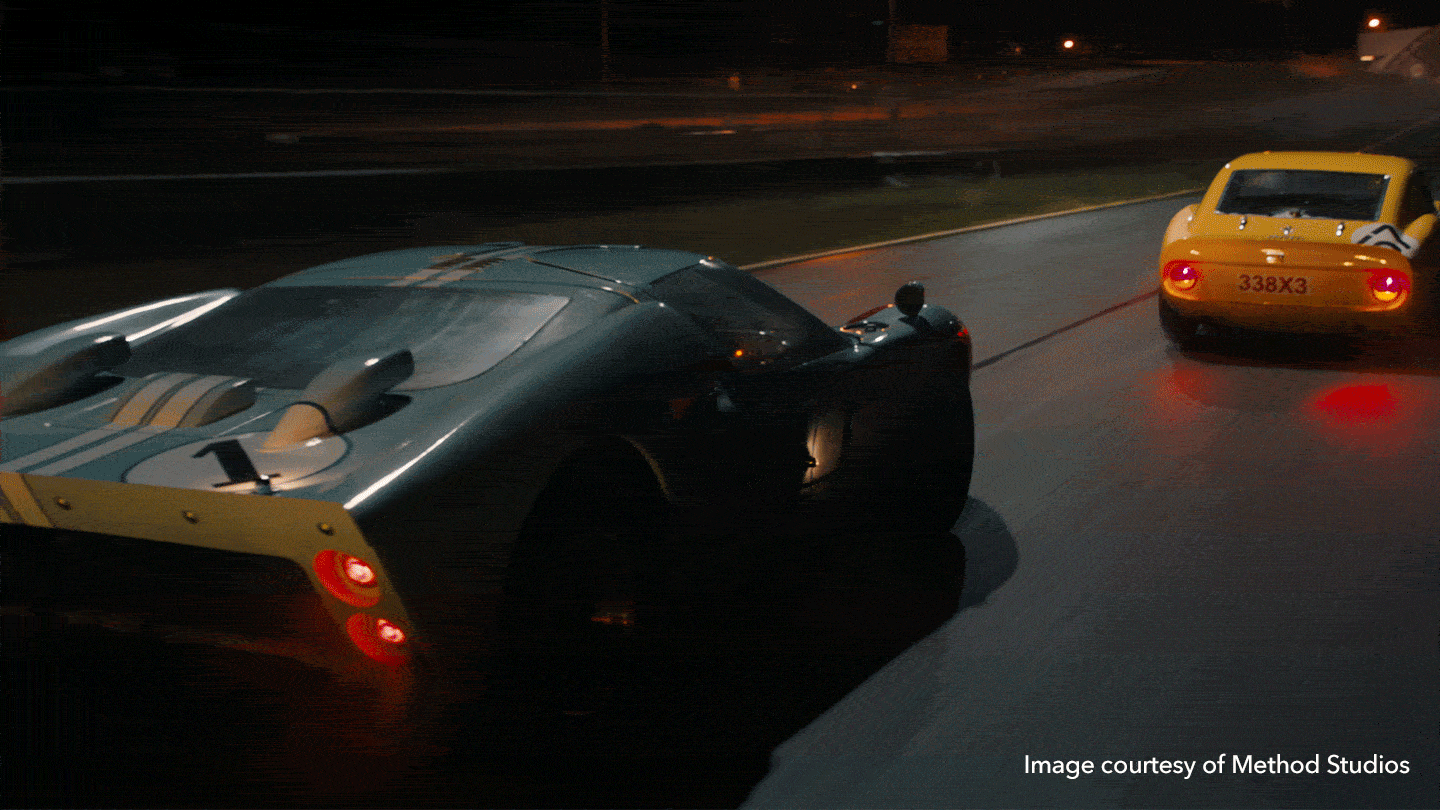
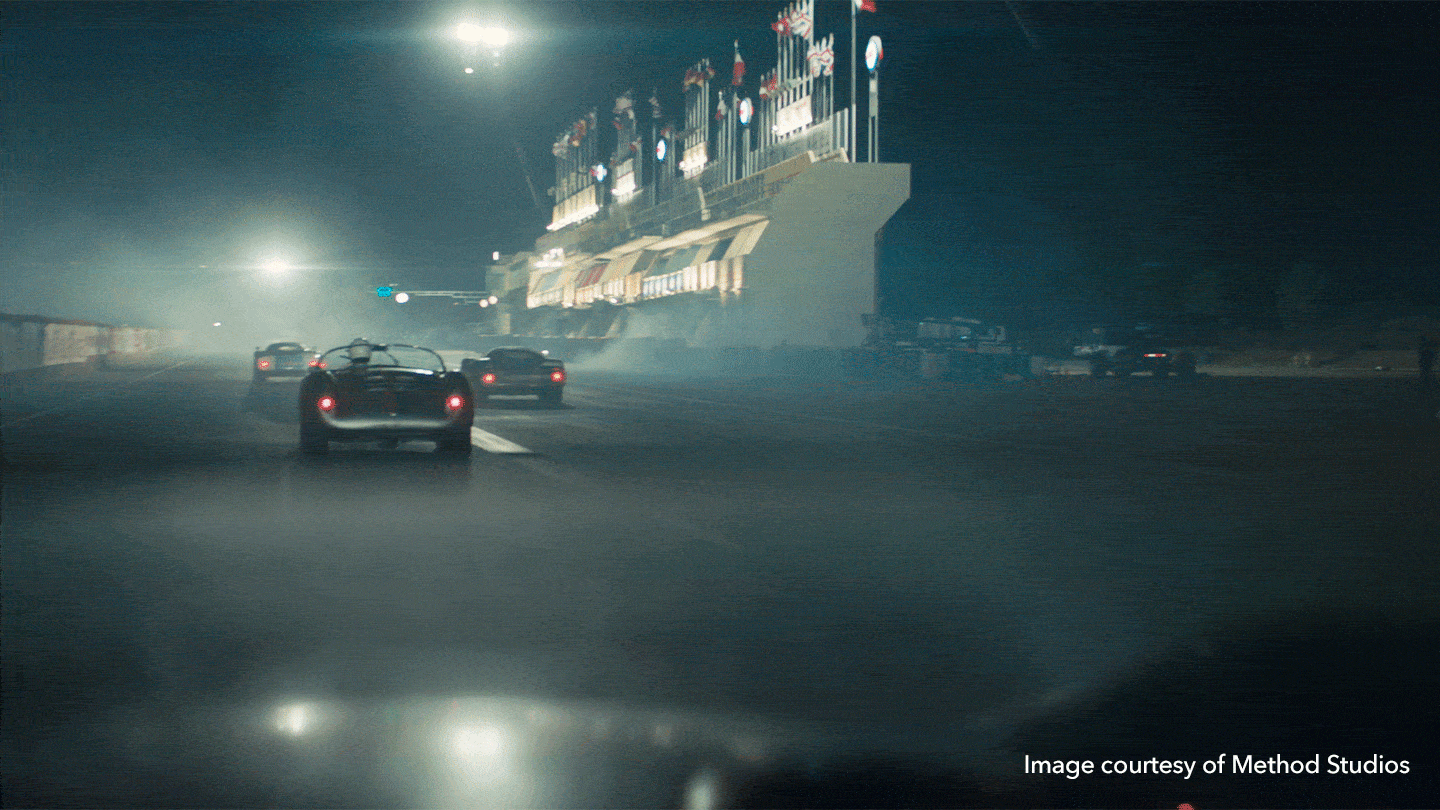
2. Introduction of Digital Visual Effects in Cinema: The Seduction of Reality
By Stephen Prince
According to current thinking, "special effects" allow movies to escape reality and enter fanciful universes with extraordinary characters. Louis Lumière and Georges Méliès were among the pioneers of film, creating facts and figures, or slices of life that depicted commonplace occurrences. As for many people, visual effects in flashy productions, bloated blockbusters, or family-friendly action fantasies are for young audiences. Dan North writes that visual effects are "a mistreated and misunderstood field in cinema studies." The author strongly believes visual effects are not developed as a set piece that is photographed or as live action. They play a major role in how film works as a storytelling medium; they are not a minor aspect. The author has a lot to say about how visual effects and cinematic realism can combine. Visual effects do, in fact, provide filmmakers with several possibilities toward realism. They employed a variety of techniques, such as location shooting, non-professional performers, minimal editing, and production design. Visual effects move in the other direction, away from live action and toward carefully crafted camera reality. With departing visuals, visual effects can offer filmmakers pathways toward reality. In this book, the writer is concerned with cinema in a narrative mode, mainly a fictional mode. Special effects are no longer used. The phrase is still used in the business, but it is now used to describe mechanical and real-world effects, including explosions or stunts involving vehicle accidents. The rest is classified as visual effects. Visual effects have a broader scope and can be seen as the creation of imaginative characters and scenarios. Avatar and Benjamin Button's title characters are two examples of how live actors and visual effects were used to create fictional characters. Some observers claim that there is a technological nostalgia for the more traditional analogue formats, which is demonstrated by the employment of digital elements to simulate photographic qualities like motion blur, grain, and response curves unique to specific film stocks.

Additional points
-
filmmakers now have because of digital tools and explain them in relation to what was previously only possible with analogue methods, as the author has explained in several chapters.
-
In Chapter One, it begins by giving some basic background information by tracking the development of computer graphics and how it has impacted cinema.
-
The effects of digital lighting and color techniques on production workflows and the cinematographer's position are explored in Chapter two.
-
The third chapter addresses digital performance styles.
-
While the fourth chapter looks at digital visual environments sets, locales, and landscapes and how these might be used to arrange narrative meaning. Instead of taking the traditional approach of relating them to ideas of spectacle or spectacular entertainment.
-
Chapter 5 analyses the full benefits of digital effects in regarding the methods by which digital instruments increase the volume of visual information It is attainable and can be altered inside the image.
-
Actors now have more opportunities, thanks to digital imagery, to embody situations and settings that were out of their reach before the analogue era. There are three ways that actors can appear in a digital environment: they can be generated by an animator, composited with digital animation, or their performance can be motion captured and transformed into animation.
King Kong 1933 vs King Kong 2005
IT STARTED WITH STOP MOTION 1933
Stop-motion movies like 1933's King Kong are considered classics and the first of their kind. The renowned Willis O'Brien oversaw the stop-motion animation of the Kong armatures.
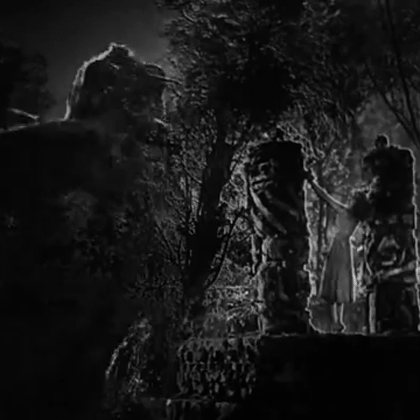

For the iconic sequence of Kong crashing down the Empire State Building, four scale-sized stop motion models were created: three out of aluminium, foam rubber, latex, and rabbit fur, and a simpler lead and fur model. Although not all of these delicate replicas have survived, Peter Jackson, who directed the 1995 film King Kong, has one.

An original 1933 King Kong stop motion armature
These days, you could accomplish this by filming the miniatures in front of a green screen and digitally combining them with backgrounds that were shot separately. However, this was accomplished using "in-camera" methods in the early 20th century. One of them called for exposing a portion of the frame (for example, with the Kong stop motion animation), and the film was then run through the camera again to expose a different portion of it with a different piece of the action.
The Dunning approach was used to integrate two separate segments of film together when live-action performers had to interact with a stop-motion Kong. As an alternative, back projection was used, using a screen integrated into a small stage, to show live-action material to match the animation frame by frame.

MECHANICAL KONG 1976
However, not all of the Kong effects over the years have been produced on a tiny scale. Full-sized Kong animatronics were built for a number of movies, especially for scenes where the ape had to grab and hold the lead actress.


Even so, the 1976 movie had visually stunning effects for the period, featuring a fully formed robotic Kong, intricate miniatures, and even human actors dressed as gorillas. In fact, it would go on to win the Academy Award for Best Visual Effects.
A CAPTURED PERFORMANCE 2005
The emergence of motion capture and digital visual effects in the 2005 movie paved the stage for nearly all upcoming creature pictures, particularly those involving apes. King Kong was made physically credible thanks to these developments. In order to prevent Watts from simply staring into a green or blue void, Serkis also performed sequences immediately opposite her, occasionally even dressed in ape proportions. Then, Weta sent the core of what Serkis created and the raw capture data right into their CG Kong.


For the movie, the formidable VFX firm organised swarms of monsters, virtual jungle settings, and an entirely digital New York in addition to Kong himself. The outcomes were unquestionably a far cry from 1933's successes, which were likewise game-changing at the time. Kong: Skull Island now aims to advance Kong effects once more.
3. The Cinema of Attractions: Early Film, Its Spectator and the Avant- Garde
By Tom Gunning
The potential of the new art, according to Fernand Léger, did not lie in trying to replicate the motions of nature or to mistakenly imitate theatrical performance. Its special ability was to make images visible. The history of early cinema, like the history of cinema in general, has been documented while narrative films have been in popularity. Gunning wrote this article in response to what he saw as an emphasis on narrative film in film criticism. It has become so common that film historians look at film and often see this progression from the beginning towards narrative cinema as if that has always been the end point of film. Additionally, he wants to say that if you look at the early days of cinema, you can see an important impulse towards spectacle or exhibitionism. He wants us to remember that cinema is predominantly a visual medium and it is about attracting us visually. How early films used to do it by showing something unusual to the viewers, which they have never seen before or by showing the reality in the pictures. According to him, these were the primary types of cinemas produced during the first year of cinema. The films try to attract viewers as they give some sort of visual pleasure, even if they have no story to tell.
It was Eisenstein who introduced the word "attraction." The audience is forcibly exposed to "sensual or psychological impact" by an attraction. He also wanted us to know that these two impulses; storytelling impulse and spectacle often go together. Gunning wants us to keep in mind that movies are mostly visual and that their goal is to attract us visually. Early movies used to achieve this by either showing viewers something odd that they had never seen before or by representing reality in the images. He claimed that during the first year of cinema, these were the main categories of film produced. Even if the movies don't have a plot, they still attempt to draw audiences by providing some type of visual enjoyment. He also wanted us to see how frequently the storytelling impulse and spectacle often go together. That's how shown by Méliès's impressed us with visual effects and a story. To entice viewers, he mentioned how important genre is, just like music, art, visuals, and explosions. The cinema appeals to us visually in addition to being narrative.
_jfif.jpg)
_jfif.jpg)
Ray Harryhausen
June 29, 1920 to 07 May 2013
If you make things too real, sometimes you bring it down to the mundane. — Ray Harryhausen
A passion that started from a garage led to a phenomenal icon of the film industry.
A type of stop motion model animation known as "Dynamation" was developed by American-British animator and special effects designer Raymond Frederick Harryhausen.
He is the legendary stop motion effect artist who created the wondrous visuals for 1981's Clash of the Titans as well as the battling skeletons of Josan and the Argonauts.
He created the path for the ground-breaking work we see on the big screen today by inspiring generations of filmmakers and pushing the art of visual effects to new heights.
Harryhausen had a long pole marked with the eye of the model who would be featured in the scene, and he would advise the actors to look into it for the perfect shot.
He was the first icon to emerge from the special effects industry and was widely considered as the genre's indisputable master.
Harryhausen came up with a unique technique for fusing his stop-motion with the live action. He used simple settings, occasionally accented with matte paintings, to stage his puppets rather than creating intricate tiny sets. A pane of glass was placed between the puppet and the camera, and a rear screen projection was set up behind the puppet.
_jfif.jpg)


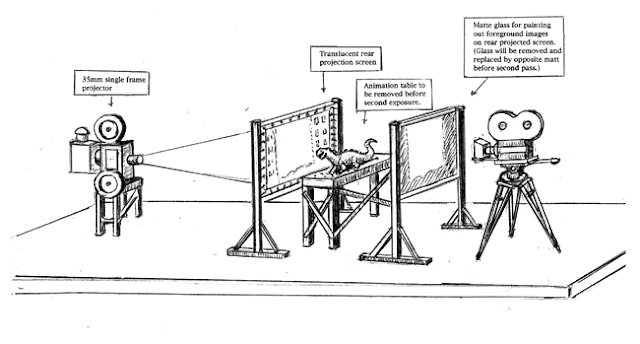
It was on The Beast From 20,000 Fathoms that Harryhausen first used a technique he created called "Dynamation" in which he would separate the background and foreground of live action footage that had already been pre-shot into two distinct images, into which he would then animate a model or models, seemingly fusing the live action with the models.
One of the first nuclear monster films, The Beast from 20,000 Fathoms, directly influenced Godzilla and served as an inspiration for a number of other creature blockbusters ( Gojira ). "Operation Experiment" is the name given to a nuclear bomb test that takes place far north of the Arctic Circle.
_jfif.jpg)
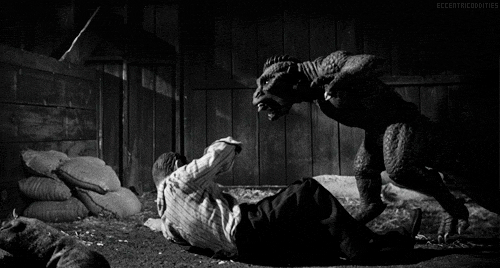
The stop-motion magic of Ray Harryhausen was used in the 1950 film Earth vs. the Flying Saucers to create images of destruction that were absolutely shocking to '50s audiences. Harryhausen primarily animated the flying saucers, as well as the tumbling bricks as the UFOs blasted and crashed into famous Washington, D.C. sites including the Capitol dome and the Washington Monument, although there was some traditional model work on exhibit.

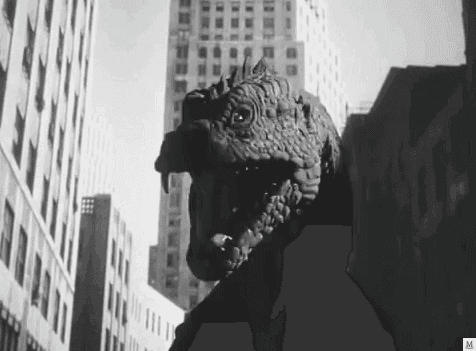

Animatation requires a great deal of concentration, and I prefer to work alone because then I'm not deterred by somebody asking me if I want coffee, or the phone ringing or something.— Ray Harryhausen
The art challenges the technology, and the technology inspires the art. - John Lasseter
4. What is digital Cinema?
By Lev Manovich
About Lev Manovich-
Manovich was raised in Moscow, USSR, where he also attended school for computer science, semiotics, painting, and architecture. Manovich is also the founder and head of the Cultural Analytics Lab, which was described in a related news release as computational analysis of enormous amounts of photographs and video from 2007 to 2016 (referred to as the Software Studies Initiative. For Google, the New York Public Library, and the New York Museum of Modern Art, his lab was hired to produce visualizations of cultural datasets. Since 1984, Manovich has employed computer media as an artist, computer animator, designer, and programmer. His artistic works include Little Movies, the first digital cinema project created for the Web (1994–1997), Freud-Lissitzky Navigator, a conceptual programme for exploring twentieth-century history (1999), and Anna and Andy, a streaming book (2000).
.jpg)
Lev outlines the dramatic shift in computer graphics and visual effects usage in Hollywood movies over the past few years in this article. As it was very expensive to own digital equipment and software, it was only done by Hollywood studios. However, the transition to digital media has had an impact on the entire film industry. Digital technology is replacing traditional filmmaking.
Through his digital filmmaking principles, Lev has highlighted the contrasts between traditional and digital cinema, arguing that there is no need to film actual scenes because everything can be produced using computer graphics and animation. Live-captured shots are an asset for the finished films. The feather scene from the film Forest Gump serves as an illustration of how unique digital cinema has become in that it can produce digitized footage without losing its properties and give a precise impression of the object. To capture a feather's true moments, it was shot in various positions against a blue background. In addition, he adds that editing and special effects are two different things because an editor's job is simply to combine sequences of images, and in the past, special effects experts were responsible for any editing that was done to an image. However, computers have closed that gap in modern times. With the help of paint software, altering or modifying a single photo has become as simple as organizing a series of images back then.
Lev explains the principles of digital filmmaking in this way.
Digital film = live action material + painting + image processing + compositing + 2-D computer animation + 3-D computer animation.
Lev continues by saying that after a scene is shot for a movie, it still needs to be edited or has to be modified before being used in the finished output. To make it work, animation, visual effects, or color correction are used. Lev adds that digital cinema is a particular case of animation, which uses live action footage as one of its many elements.
Remake Comparison between Mortal Kombat 1995 VS 2021
.jpg)

.jpg)
.jpg)

5. GEORGE LUCAS DISCOVERS COMPUTER GRAPHICS
By Alvy Ray Smith
In this article, Alvy Ray Smith discusses his time as Lucasfilm's director of computer graphics in 1980, when their main objective was to create a fully computer-generated movie and was specifically asked to develop three pieces of equipment, including a digital audio synthesizer, a digital video editor, and a digital film printer, now known as a Pixar. Smith also referred to individuals like George Lucas and Steve Jobs as "accidental visionaries" since they made investments based solely on instinct rather than a thorough understanding of the potential of the area.Later in the article, it was mentioned how Alvy had the freedom to form his team and had then gathered the best computer scientists. Smith continues by describing how a 3D sequence for Star Trek II: The Wrath of Khan was made. The director and designers were having trouble deciding what could or could not be done using computer graphics, so he presented the idea of giving him a night to reflect and form a clear vision.
The Genesiss Demo, a pitch consisting of 60 story cards, was introduced by Alvy Smith. The day after the premiere of Star Track II, Lucas walked into the Smiths' office and said, "Great camera shot." They had specifically designed the sequence to "Knock George's socks off." To create this amazing shot, the team decided to make a specific camera shot that will move in sync with the spaceship known as 6D Spline, In addition to the 60-card storyboard pitch being approved, Alvy was immediately granted his first directing position. Alvy also states at the article's conclusion that their goal to create a fully computer-generated film was accomplished in 1995, 20 years later.

Founders of Pixar
Alvy ray smith
Co-founder of Lucasfilm's Computer Division and Pixar
Alvy Ray Smith III, an American computer scientist, was born on September 8, 1943. He is a co-founder of Pixar and Lucasfilm's Computer Division, contributing to the development of computer animation in feature films in the 1980s and 1990s.
Alvy Smith graduated from New Mexico State University with a bachelor's degree in electrical engineering in 1965. (NMSU). At NMSU, he produced his first computer graphic in 1965. He graduated with a doctorate in computer science from Stanford University in 1970.

Smith has received two awards from the Academy of Motion Picture Arts and Sciences for his engineering and scientific work on digital image compositing (1996 award) and digital paint systems (1998).
Loren Carpenter
Loren Carpenter served as Pixar Animation Studios' principal scientist and co-founder. He is one of the creators of the PhotoRealistic RenderMan software, which employs the Reyes rendering algorithm and renders every Pixar film. He is also co-inventor of the Reyes rendering method. Carpenter joined Disney Research as a Senior Research Scientist when Pixar was acquired by Disney. He took early 2014 retirement.
John Lasseter
Alvy Ray Smith and Ed Catmull of the Lucasfilm Computer Graphics Group were among the contacts Lasseter had established in the computer sector while assembling a crew for the anticipated feature. After being dismissed and feeling depressed that his time at Disney was coming to an end, Lasseter attended a computer graphics conference at the Queen Mary in Long Beach in November 1983, where he ran into Catmull again and spoke with him.
Edwin Earl "Ed" Catmull
Computer scientist & co-founder of Pixar
Peter Pan and Pinocchio were two Disney films that Catmull found inspiring early in life. After graduating from high school, he had no idea how to pursue his dream of becoming an animator because there weren't any animation institutions in the area. He also like physics and math, so he decided on a career in science. [9] He produced animation using flip pages as well. Catmull earned a B.S. in computer science and physics from the University of Utah in 1969.
_jfif.jpg)

_jfif.jpg)
6. The Uncanny Valley
By Masahiro Mori
Masahiro Mori is a Japanese roboticist renowned for his groundbreaking work in the automation and robotics industries. "Bukimi No Tani," which was afterwards roughly translated as "uncanny valley," has been introduced by Mori. This theory suggests that, up to a point, as the degree of human similarity in an object's design increases, so does one's affinity for the object.
Affinity drastically decreases as likeness gets closer to being perfectly accurate and is replaced by an uncanny or uncanny feeling. Once true human likeness which suggests a living person is attained, affinity increases once more. There is a "valley" in the level of affinity induced by the abrupt rise and fall brought on by the uncanniness.
At the end of the article Mori says to begin understanding what makes us human through robotics research, Mori advises that we start by creating an accurate map of the uncanny valley. It is also essential to construct this map using nonhuman designs that are easy for humans to understand.


7. Digital storytelling: the narrative power of visual effects in film
By Shilo T. McClean
CHAPTER 8
SO Here's the Deal: A CASE STUDY CONSIDERING THE INFLUENCE OF FRANCHISE FILMAKING AND ITS RELATIONSHIP TO DIGITAL VISUAL EFFECTS.
In this chapter, McClean demonstrates the connection between French filmmaking and digital visual effects. A case study centered on the genre-defying Alien films is used in this chapter to analyze the issue of franchises. Since it wasn't made with the purpose of inspiring franchises, the Alien franchise, according to this essay, is the best illustration of a franchise. Dan O'Bannon and Ronald Shusett's initial title for the song was "Star Beats." A name changes to Alien occurred later. The Alien franchise, in particular, exemplifies how the use and development of technology can serve the themes of the film. In short, it demonstrates how both filmmaking technology and filmmakers' ideas are improving. Franchise movies brilliantly illustrate this by beginning with a point of natural production and concluding with a sifi-crafted production. In this case study, comparisons have been drawn between several film producers' varied developments. Due to the fact that the technology utilized to create it is vital, it is not only about the idea of producing the sequel.


Principal of Animation
1. Squash & Stretch


The physical characteristics that are anticipated to change during any process are covered by this principle. Our animation is more believable when the squash and stretch are done correctly.
For Example: When we drop a ball from height, there is a change in its physical property. When the ball touches the surface, it bends slightly which should be depicted in animation properly.
2. Anticipation


The second of the 12 laws of animation is anticipation. It has two levels of meaning as well. The physical level is the first. It is divided into three distinct phases. Getting ready to take action is the first stage. The second is actually doing the thing. Lastly, completing the action taken. Making the action that will come next as obvious as you can is the most crucial component of anticipation. The audience has faith in you to provide hints throughout the narrative.
3. Staging

Staging is the process of putting up the scene, including the positioning of the people, the background and foreground objects, the mood of the characters, and the camera angle. The viewer can clearly understand the animation's goal thanks to staging. In order to prevent confusion among the audience, you should keep the audience's attention on what you want to convey to them (and avoid providing extraneous detail). Staging is the process of putting up the scene, including the positioning of the people, the background and foreground objects, the mood of the characters, and the camera angle. The viewer can clearly understand the animation's goal thanks to staging. You must maintain concentration.In order to prevent confusion among the audience, you should keep the audience's attention on what you want to convey to them (and avoid providing extraneous detail).
4. Straight Ahead Action and Pose to Pose

In a way, Straight Ahead and Pose to Pose are two ideas that deal with various methods of sketching. Action scenarios that happen immediately need animating every frame from start to finish. If you want to produce precise postures with maintained proportions, don't do this. Instead, do it to create a fluid illusion of movement for action sequences.

When animating from position to pose, animators first sketch the crucial frames and then fill in the gaps. This method is preferred for dramatic, emotional moments since the relationship to the environment and composition become more crucial. Disney animators frequently used both techniques because their films frequently feature dramatic and action scenes.
5. Follow Through and Overlap
_jfif.jpg)

These two movement-based ideas work together to increase the realism of character movement in animation and give the appearance that figures are obeying physical laws. Follow through refers to the body parts that carry on moving after a character has stopped. Similar to a real human, the components then begin to draw out from the centre of mass. Objects are also subject to follow through. Overlapping motion proves that different bodily parts move at different rates.
6. Slow In and Slow Out

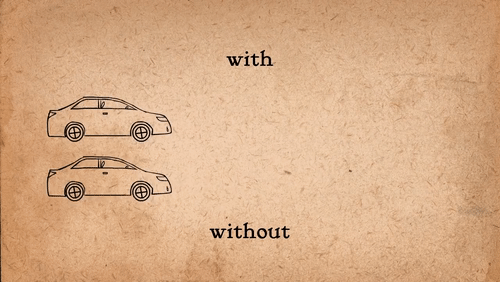
The "ease in and ease out" animation principle is another name for it. Real-world objects must speed up when they begin to move and slow down before coming to a complete halt. More frames must be created at the beginning and finish of an action sequence in order to express this in animation. Ease in, ease out helps the audience relate to and empathise with your characters while bringing greater reality to your animation.
7. Arcs


In actual life, the majority of actions follow an arc. This is the rule animators should adhere to for more authenticity. Movements that follow natural arcs will produce fluidity and prevent awkward, inconsistent animation, whether you're animating the effect of limbs moving or an object being flung into the air.
Traditional animators frequently softly sketch arcs on paper as a reminder and then delete them once they are no longer necessary. With arcs, timing and speed are crucial because they can occasionally happen so quickly that they become unrecognisable.
8. Secondary Action


By giving your characters and objects another dimension, this animation approach helps highlight the primary action in a scene. Your works take on colour and become more believable by using subtle details like the way a person swings their arms while crossing the street. Secondary actions have a great deal of potential to make a scene come to life, so long as they don't detract from the main action.
9. Timing

Timing is crucial in animation, just like in real life. If you apply this approach correctly, everything will seem to obey the rules of physics, which will give your animation a realistic foundation. Consider your characters' size and weight in relation to what and who are around them. When being pushed, a lightweight person or object will respond more quickly than a heavy one. Get the amount of frames or drawings right in animation to achieve precise timing. The slower the motion, the more frames or drawings you'll need to add, just like with the "ease in, gently out" animation approach.
10. Exaggeration

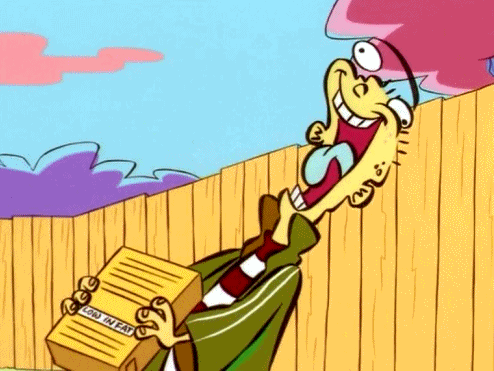
If you exaggerate this secondary action, it can increase the intensity of the expression. Exaggeration does not always necessarily mean more. You can also exaggerate stillness or the “negative space” of animation.
11. Solid Drawing


One of the trickier animation fundamentals to master is solid drawing, especially in traditional animation. This is due to the fact that your products must feel three-dimensional and have weight and volume. You can learn more about weight, balance, gravity, light, shadow, and other concepts through art classes. Johnston and Thomas cautioned against making "twins," in which people would seem lifeless because their left and right sides were identical, in The Illusion of Life.
12. Appeal
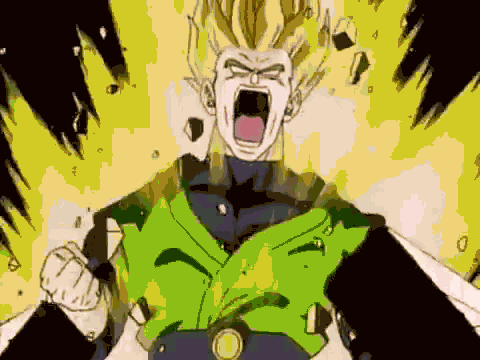
All animated characters should have charm, whether they are cute caterpillars or dragons set on doing havoc. There isn't a concrete formula, but a decent way to give a product the "awww" factor is to give it a round, childlike face. Strong, sharp, and symmetrical traits are frequently found in heroes.
8. Digital humans that look just like us.
By Doug Roble
Doug Roble, Senior Director of Software research and development at Digital Domain, explains in this TED talk how digital humans can be created and made to be so precise that they can contribute not only in the creation of films but the entire human race. You can create a digital person or any character in real time by wearing an inertial motion capture suit. A camera records the wearer's face and feeds the data to a programme that captures the wearer's exact
expression and converts it to a digital human. Roble thinks that the most difficult aspect of visual effects is to produce a digital human that the audience accepts as real because he believes that people are very skilled at recognizing one another.
Roble also says that creating a photorealistic photograph human requires a lot of effort and time. While using this, it can be rendered instantly. Roble also discusses the limitations of real-time rendering and how, with the aid of numerical data, face-capture technology, and extremely powerful graphics cards, they were able to get the precise level of detail they were after. In my essay, I'll go into real-time rendering in great detail.
_jfif.jpg)

Bulebolt did the task, which involved creating an antique industrial aesthetic with the use of vfx. It was one of the reasons I was excited for our previous trip because the majority of the impacts are invisible.
I've already mentioned this film and how much I appreciate how the majority of the scenes look natural and realistic. Making those scenes is an excellent illustration of invisible effects.
VFX Compositing
Essay Topic - Digital Photorealism: In the context of Viual Effects how would you define the term Photorealism
Essay Presentation







Essay
Bolter and Grusin (1999, pp. 114–116) clarify by bringing up photorealism in their book that the goal of photorealistic computer graphics is to create a realm free of all references to the medium itself as well as to other media, but it has never been capable of maintaining that purity. It must instead capture us using the principles of linear perspective painting and photography. Before learning more about digital photorealism in the context of visual effects, it's vital to understand its origins. The photorealism genre, also referred to as superrealism, was established in 1969 by American novelist and art dealer Louis K. Meisel (‘Louis Meisel’,2020). The method was influenced by photography; rather than actually viewing events as they occurred, it used the visual data captured by a camera to create illusionistic paintings, sketches, and other works of art. The term "originators" was defined as follows:
1) The Photorealist uses the camera and photograph to gather information.
2) The Photorealist uses a mechanical or semi-mechanical means to transfer the information to the canvas.
3) The Photorealist must have the technical ability to make the finished work appear photographic.
4) The artist must have exhibited work as a Photorealist by 1972 to be considered one of the central Photorealists.
5) The artist must have devoted at least five years to the development and exhibition of Photorealist work.
Having a discussion on digital photorealism, it has recently grown in importance in the film industry, or, to put it another way, it's one of the main elements that contribute to the interest level of movies and television shows. It is without a doubt important in the context of visual effects CGI can assist in resolving numerous film flaws and permits the maintenance of the photorealistic quality in the scene. The main benefit of digital photorealism is that it gives creators more freedom. When you, the viewer, are absolutely certain that something is real even though it turns out to be CGI, it makes the viewer believe it to be real. For instance, a scene in which the entire army and the fort were involved was shot in the open with a few pieces of ammunition. In addition, it enables storytellers like filmmakers and others to tell stories that otherwise would not be possible. Moreover, architects employ CGI renderings in their catalogue, and those who have access to VR technology can even tour a house as if it were already finished. It becomes very difficult to convey it when you are there and they draw out some designs and explain how the residences would look to you. CGI, however, produces a very vivid vision. Regarding digital photorealism in the context of VFX, Andrew Price, better known as Blender Guru (Blender Guru,2016) made a statement in one of his videos by displaying a graph illustrating how the standard for using actual assets in movies has lowered while the standard for CGI is rising. No matter what, any CG or VFX artist's first objective is to achieve photorealism.
Photorealism continues to be one of the most in-demand skills in 3D as movies and video games take our attention to ever-more extraordinary storylines. So how may CGI or digital photorealistic images be produced? In his video (Blender Guru, 2016, 10:07), Andrew Price lays out a theory he refers to as the "Four Building Blocks of Photorealism." In order to make the process easier to understand, he divides it into four sections, which he refers to as a house. Modelling, material, lights, and post-processing are these four components. The reason for classifying this procedure as a house is because modelling makes up 20%, materials make up 35%, lighting makes up 35%, and post-processing makes up the final 10%. Starting with modelling, it is important to get the proportions and shapes right in order to achieve photorealistic modelling. The foundation of the structure, as indicated by Andrew Price, is the reason behind this. The modelling stage can be relatively simple and straightforward because it is the beginning, but it is crucial to get it right because if the proportions are off as we move forward, the entire process would be useless. Price specifically mentions in his videos (Blender Guru, 2016, 14:05) that the scale should be kept in line with reality to obtain a photographic image. People may counter that sometimes it is obvious to claim that the measurements are accurate based solely on their eyes. However, Prices thinks that our perceptions may not be as precise as we think. Moreover, he suggests making use of references for photos whenever possible. In order to create a photorealistic image of a human, according to Prices, studying anatomy is essential because even a minor error might make it appear fake.
Moving on to the subsequent, important step, materials. It can be argued that something is photorealistic when the shading and texture resemble the real world. This is one of the most crucial steps in obtaining photorealistic images. Prices explains that if the shading or texture is off, the eyes can easily spot it. To create a photorealistic image, the materials must be precise in order to provide reasonably good light reflection and refraction. He provided an example of how much time an artist should spend on material in his video (Blender Guru, 2016, 23:24). for example, one should spend at least 2 hours on the material if they are required to create a photorealistic image in 4 hours. Having quality materials will enhance the realistic effect and enable the light to do his duties in a more organic manner. A realistic outcome for the final photo depends heavily on lighting, which is crucial in a similar way to materials. Lighting that is photorealistic reflects not only colour but also the direction and intensity found in real life. By understanding light colour, he described "light" by placing all the lights in the Kelvin scale. As a basic rule of thumb most lights in the real world fall within that scale (Blender,2022). For a more realistic depiction, it is more important to keep the light at the right distance and bounce. Utilizing real-world lighting directions is crucial. Furthermore, it asserts that reflections are just as significant as light. If an object did not reflect the amount of light that it was supposed to with decent material, photorealism might be killed. The final phase is post processing, which is in some ways simple. To achieve digital photorealism, the entire purpose of post processing is to replicate the imperfections that come from real-world cameras. As computer - generated imagery, we have access to digital cameras that produce perfect images—a physical impossibility that does not exist in the actual world. Most CGI artists have a deep interest in photography, which helps them develop a perspective of the actual world that they can display in their final simulations. A solid understanding of photography can be useful for achieving digital photorealism in a variety of ways. Andrew Price have mentioned five camera imperfection which he thinks are the most important and should keep in mind while making digital photorealistic images (Blender Guru, 2016, 41:44).Glare, motion blur, depth of field, chromatic aberration and barrel distortion. Starting with glare, it is important to realise that lens flare results from a strong light source in the background. Even though it doesn't really change anything, give it a small hit and add some glare. If your final render is missing it, it is too easy to tell that it is computer-generated. Second, there is motion blur, which is something that everyone is familiar with, but knowing when to utilise it will depend on your level of photographic expertise. Because the shutter must be open for a longer time so that it can catch the scene's light, motion blur is most obvious in low lighting conditions. When creating digital photorealism, it's crucial to consider if the scene has adequate lighting or not. If not, motion blur can be used to add realism. Additionally, when working on projects with fast-moving objects, motion blur can be essential for creating realistic scenes. Moving forward, it's also vital to consider depth of field. Only one subject can ever be in sharp focus, just like in photography. Therefore, either the foreground or the background are out of focus. It will be quite simple for viewers to spot the CGI and it won't be considered "digital photorealism" if the shot is hundred percent focused. Chromatic Aberration is the creation of a fringed colour. This effect is most likely to be observed when something bright meets something dark, most often with cheap lenses. However, it is not as significant as it may seem because these days' equipment are so much better, we can hardly find this efficiency and find it difficult to detect. last which is barrel distribution, talking about this effect in a video, Andrew Price says when a picture is shot, the lens of camera has a slight bend which makes a completely straight object which has little bend.
In his lecture (Blender,2022) on the "Secrets of Photorealism," Price claims that "Toy Story 4" is the next movie that should be watched in order to learn more about photorealism. This is because "Toy Story 4" proved the principals of photorealism to be true. Even though the movie is animated, the usage of light s provides the impression of photorealism, and the audience is lead to believe that it is real. Later, he goes on to emphasise how important materials are in producing realistic images. The vision is enhanced by a balanced ratio of light reflection and refraction, often known as diffuse. He claims that it is incorrect to reduce specular for an object in order to reduce reflection. Instead, it should always be set to 0.5 and increase the roughness of an object's material. Although it may appear that there is no difference because all the items reflect light, they all do; they just have varying degrees of roughness. Thus, Toy Story 4 has achieved that level of photorealism that can be comparable to the actual world and would have the exact effect by focusing on the two primary pillars of photorealism: light and materials. The statement made by Alex Roman that "90% of the time, the materials and the lighting hold the weight if developing authentic photographic imagination" feels particularly accurate in this case.
To sum up, photorealism is an important component of the visual effects sector since it enables artists and filmmakers to produce digital images that feel and appear real. Additionally, photorealism has been employed in video to convey strong narrative. Not only that, but viewers have high expectations for the movies, and a small error might lead them to believe that a scene or image is CGI, even though they are aware that it depends entirely on the level of photorealism they like to see, which is unreal with genuine effects. However, the most crucial advice that every artist can use to produce photorealistic results is to use as many reference photos as they can. Although it will be difficult to accomplish, this objective has the power to completely alter how we view the world.
Reference list
Blender (2022). The Secrets of Photorealism. [online] www.youtube.com. Available at: https://youtu.be/Z8AAX-ENWvQ [Accessed 20 Nov. 2022].
Jay David Bolter and Grusin, R. (1999). Remediation: understanding new media. Cambridge, Mass. MIT Press
Meisel, L. (2020). Louis K. Meisel. [online] Wikipedia. Available at: https://en.wikipedia.org/wiki/Louis_K._Meisel.
Price, A. (2016). Photorealism Explained. YouTube. Available at: https://www.youtube.com/watch?v=R1-Ef54uTeU.